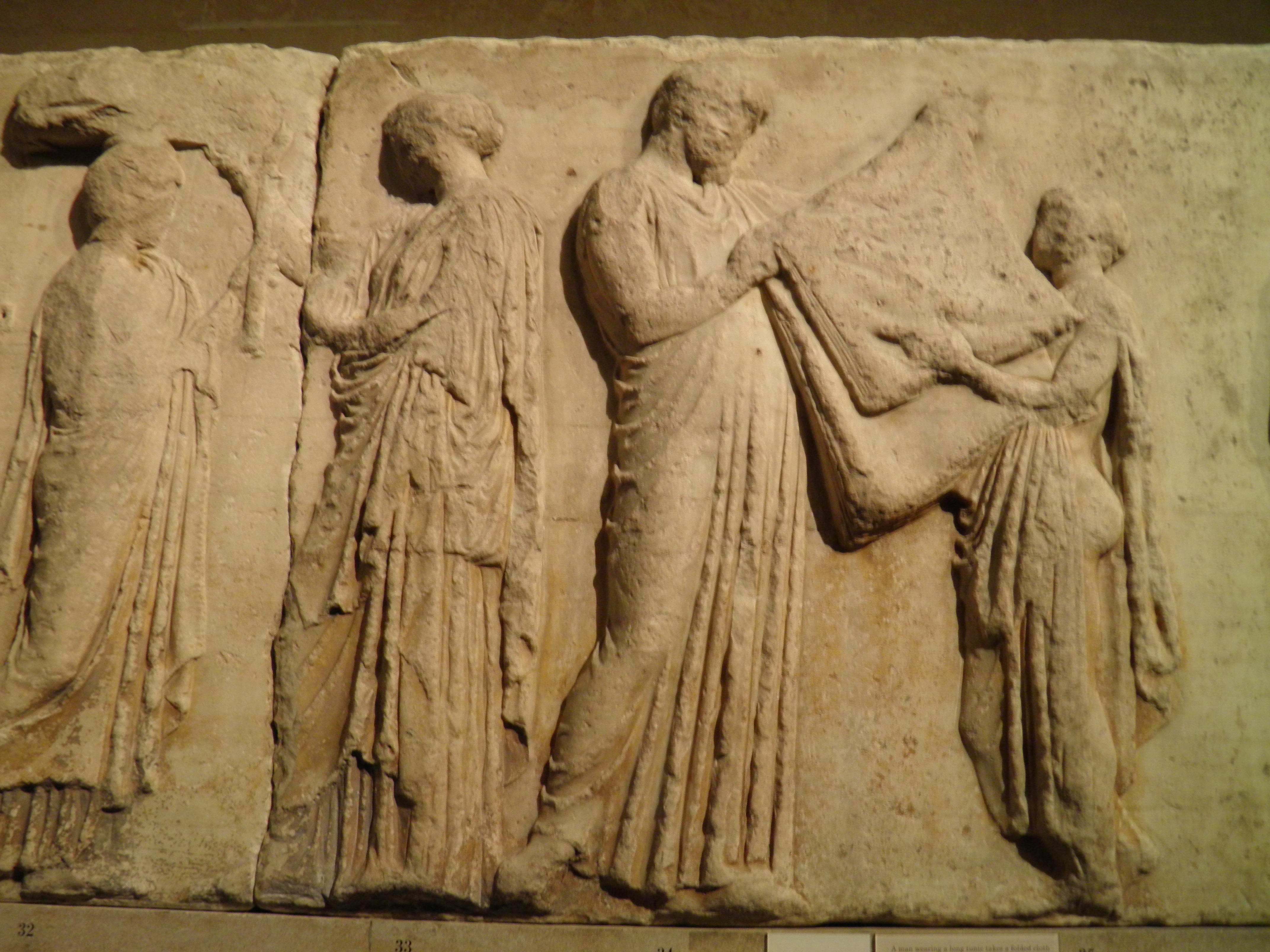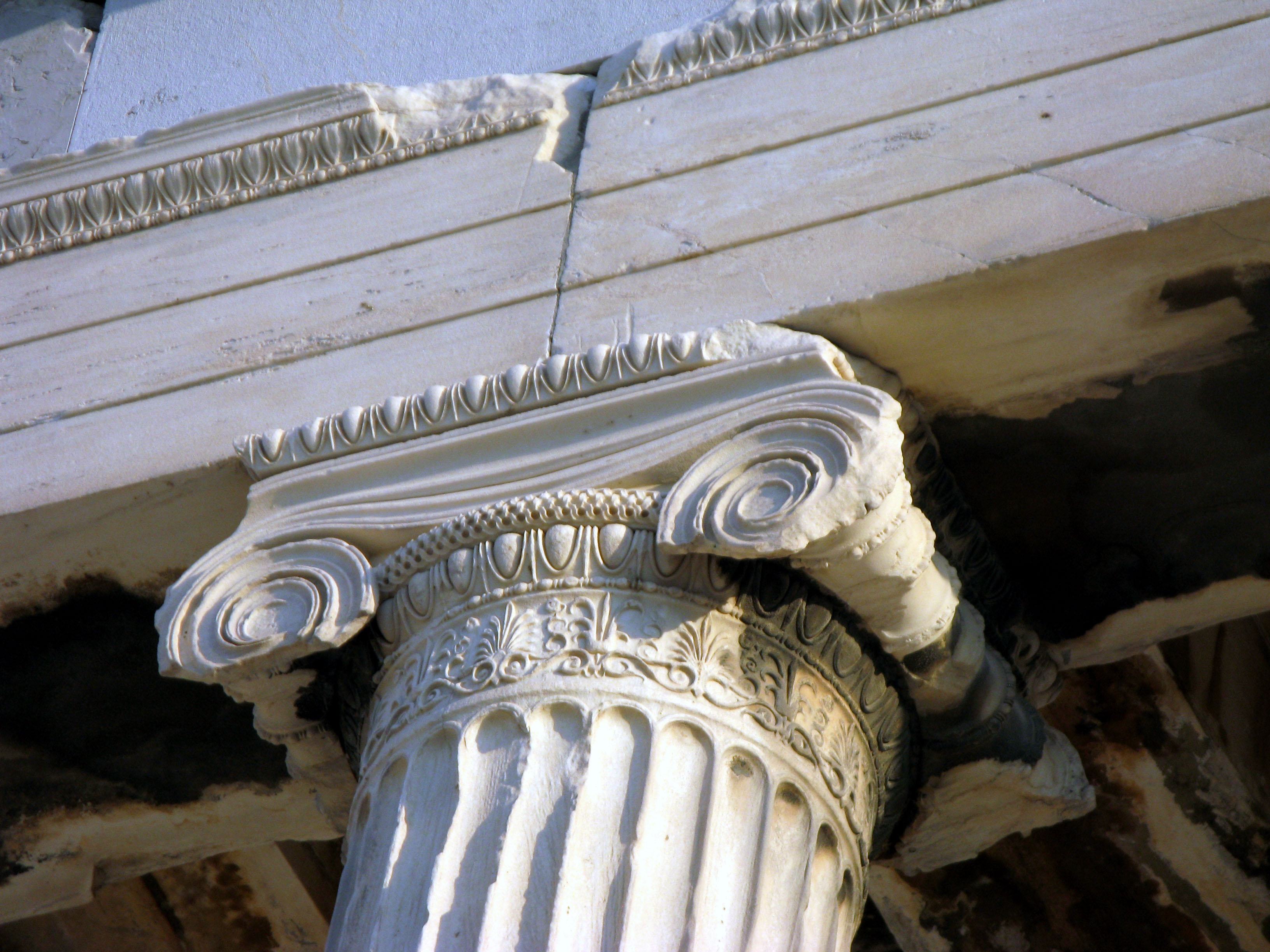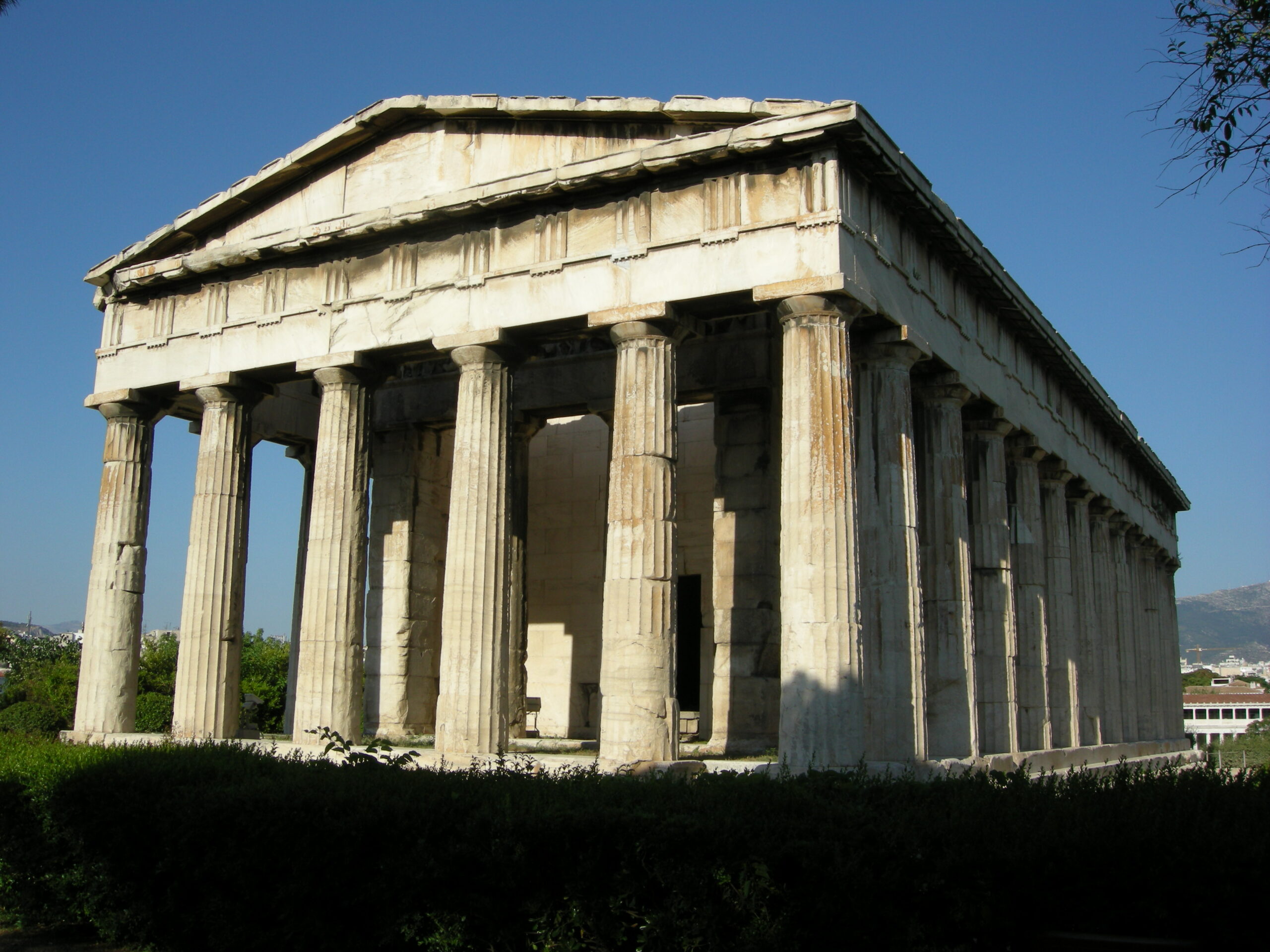
Famous Examples
- The buildings on the Acropolis in Athens, most notably the Parthenon.
- The Great Altar at Pergamon, modern Turkey (now in the Pergamon Museum of Berlin)
- Temple of Hera at Paestum, modern Italy
What, When, and Where?
Classical Greek architecture can be found in Greece, the surrounding islands, and places in Turkey, Sicily, and southern Italy. You can also find fragments in museum collections throughout the world. Due to their great age, pretty much all surviving classical Greek buildings are ruined to one degree or another. Few, if any, complete structures still stand, and those that survive at all are typically temples or civic structures such as theatres or stoas (public gathering places) rather than private homes.
Ancient Greek history is divided into several periods. The architecture we’re talking about today was built during the archaic period (about 600-480 BCE), classical* period (480-400 BCE), and the Hellenistic period (began around 323 BCE and trailed off around 31 BCE).
*The term “classical” is often used to cover ancient Greece and Rome in their entirety when contrasted to the modern world. I’ll use the word in that general sense here.
Key Features
- Buildings are usually made of white stone. (Sort of.) They were originally painted, as were many classical statues, but the paint wore away a long time ago, leaving the plain marble behind. Since the paint has been gone for centuries, people generally assume that these buildings were always uncolored. That’s why later buildings in classically-inspired styles (such as in the Renaissance) have typically been made of uncolored stone or marble as well.
- Buildings are generally rectangular in shape. Theatres are the exception and tend to be semicircular.
- Ancient Greek architecture used post-and-lintel construction. This means vertical supports (posts) like columns or pillars supporting straight horizontal roof beams (lintels). You won’t generally see arches and vaults in Greece during this period; that’s more of a Roman thing.
- Row of columns (called colonnades) on one to four sides of the building.
- Decorated entablatures (horizontal elements supported by column) with many possible components. Triangular sections connecting flat walls to pitched roofs are called pediments. Long, rectangular ones are called friezes, and small, square-ish ones are called metopes.
- Windows are small and interiors dark.
- Architectural sculpture – sculpture that is physically part of a building – is a major component of surviving ancient Greek architecture. This is primarily relief sculptures – raised figures carved out of a block of stone that are not fully three-dimensional.
- Buildings have flat or gently-pitched roofs. There are no arches, vaults, or domes in classical Greek architecture.
- Proportion is huge in classical Greek architecture. Architects used established systems of proportion to relate different elements of a building to each other in order to great the elegant and harmonious appearance these buildings are most famous for.
- Simplicity is another key feature of this style – there’s not a lot of fussiness or extraneous decoration.
- The three classical architectural orders (see below).

The Orders
Classical Greek architecture was based on a system of three architectural orders – Doric, Ionic, and Corinthian. Each consists of a type of columns and configurations of elements in the entablature (horizontal section above the columns). It’s best to understand them through diagrams, so click here for some great ones at Smarthistory.

Background
Ancient Greek culture developed in Greece, the Aegean islands, and Greek colonies in Asia Minor (now Turkey) and Magna Graecia (Sicily and southern Italy). The Greek world consisted of numerous city states called poli or polis in the singular. All were independent from each other but shared common language, religion, and many general aspects of culture. The poli were sometimes allies and other times enemies. Despite wars, coups, and turmoil, this system existed until Alexander the Great conquered Greece in the 300s BCE. Alexander loved all things Greek, so he and his army spread Greek ideas through his massive empire. This sparked what’s called the Hellenistic period, in which Greek art and culture dominated around the world. Hellenistic architecture blended classical forms with various outside influences.
Learn to think like an art historian.

Underlying Ideas
- The ancient Greeks believed in the existence of many gods. Some, like Zeus and Aphrodite, are familiar to readers today.
- Religion was involved in every aspect of life in the Greek polis.
- The Greeks built temples to different gods in order to make sacrifices to them, gain their favor, and conduct important festivals.
- The classical Greek world valued learning and intellect. Great Greek thinkers made contributions to fields like philosophy and math. We still study people like Plato and Aristotle today.
- Athens was the cultural capital of the Greek world, and it eventually became the most powerful polis. It was the birthplace of democracy.
- The idea of citizenship was important in many poli, not just Athens.

Why You Should Care
Even if you don’t live in the Mediterranean, ancient Greek architecture is still relevant to you, because classical Greek and Roman architecture have inspired more subsequent architectural styles than any others. This is especially true in Europe and North America and their former colonies. Renaissance, Baroque, Neo-Classical, Georgian, Federal, and Beaux-Arts are just some of the many architectural movements that have borrowed extensively from the ancient Greeks, their Roman successors, and other styles inspired by them.
This is because these two civilizations have been held in such high esteem by most western cultures, who wanted to closely emulate the Greeks and Romans for a host of reasons. The thinkers of the Renaissance, for example, saw classical forms as an ideal way to represent the world’s return to classical reason and order. Greek-style architecture (called Federal in this context) was prevalent in the early United States, especially for governmental and civil buildings, because of its associations with Athenian democracy.
We tend to associate these classical revival styles with grand civic buildings, especially those relating to culture, government, and education. However, they also appear in churches, private homes, and pretty much every other form of building you can think of. There’s also a pretty wide range of ways architects can draw inspiration from the classical past, from subtly to very overt. Obviously classicizing (a shorter way of saying classically inspired) architecture went out of fashion in most places in the early-20th century, but that doesn’t mean that every single modern and contemporary architect has completely rejected everything from the classical past. In some ways, the classical tradition has never fully ended, so if you’re interested in architecture at all, it’s a good idea to understand the ancient Greeks.
Resources
- Becker, Jeffrey A. “Greek architectural orders” in Smarthistory, August 8, 2015, accessed December 5, 2017.
- Becker, Jeffrey A. “Introduction to Greek architecture” in Smarthistory, August 8, 2015, accessed December 5, 2017.
- The British Museum. “Ancient Greece, an introduction” in Smarthistory, February 28, 2017, accessed December 5, 2017.
- Cartwright, Mark. “Greek Architecture“. Ancient History Encyclopedia. Last modified January 06, 2013.
- Cartwright, Mark. “A Visual Glossary of Classical Architecture.” Ancient History Encyclopedia. Last modified March 10, 2013. Accessed December 11, 2017.
- Cragoe, Carol Davidson. How to Read Architecture: A crash course in architectural styles. New York: Rizzoli, 2008.
- Hemingway, Colette, and Seán Hemingway. “Art of the Hellenistic Age and the Hellenistic Tradition.” In Heilbrunn Timeline of Art History. New York: The Metropolitan Museum of Art, 2000–. (April 2007).
- Watkins, David. A History of Western Architecture. Fifth edition. London: Laurence King Publishing, 2011. P. 23-57.
- Greek Architecture: Everything You Need to Know | Architectural Digest

